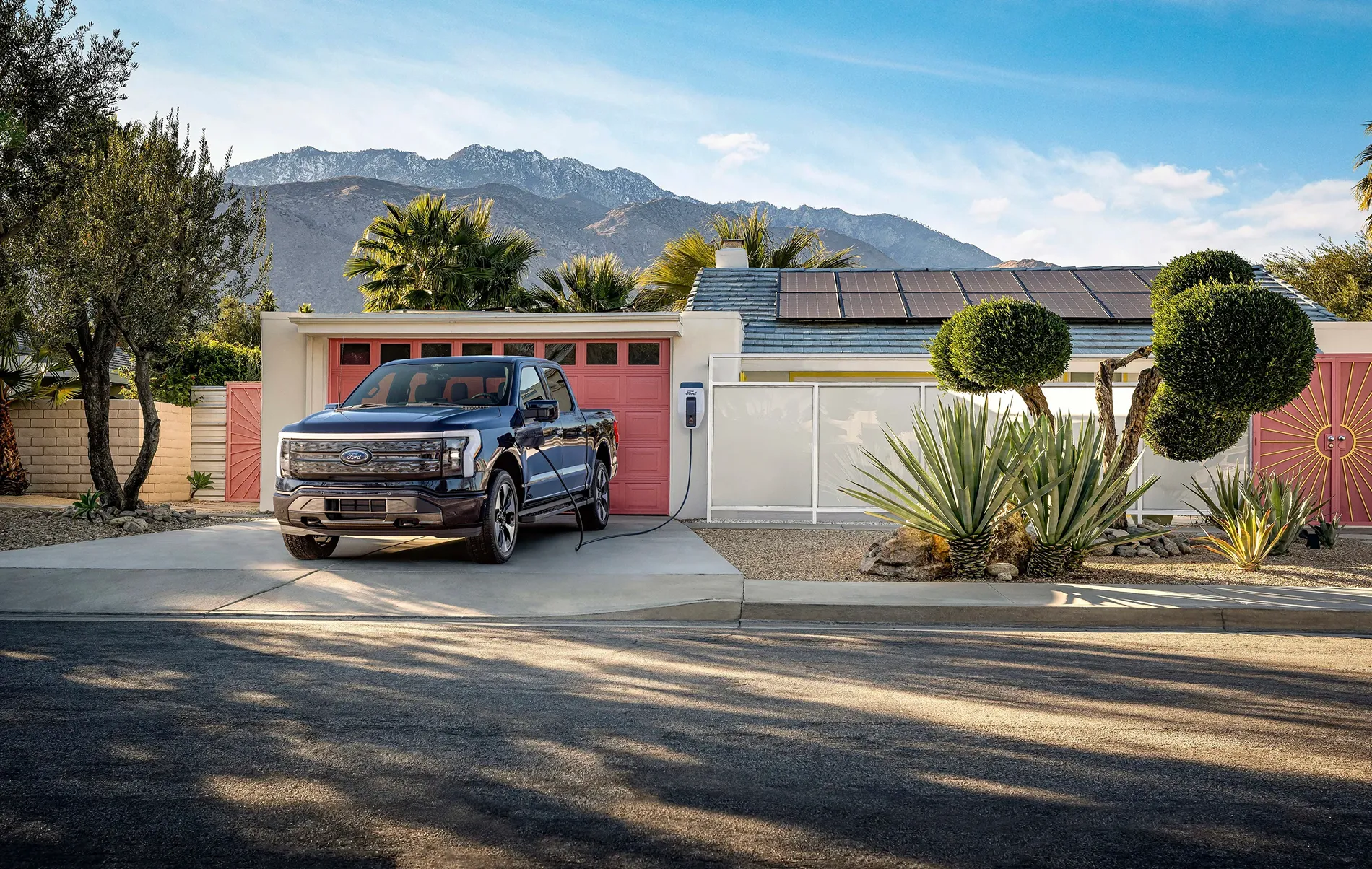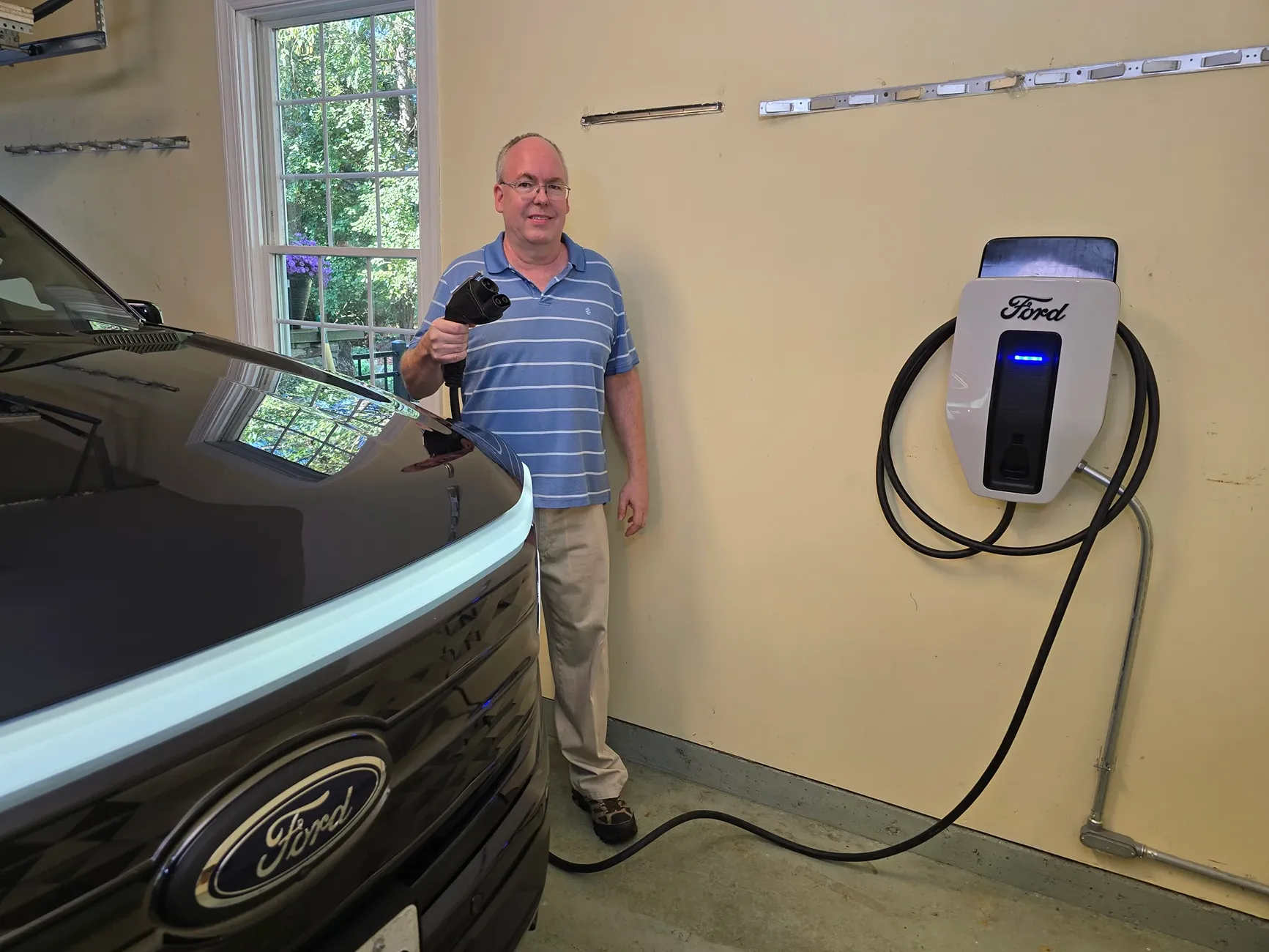- Joined
- Dec 22, 2019
- Threads
- 346
- Messages
- 1,252
- Reaction score
- 1,721
- Location
- Purple State
- Vehicles
- F-150
- Occupation
- Admin
- Thread starter
- #1
Ford Release 10/28/25
Your Next Side Hustle Might Come from Your Parked Electric Vehicle
View attachment 107876
What if your F-150 Lightning®truck didn't just get you to work, but worked for you while it was parked at home?
An electric vehicle can be more than just your daily driver; with the right tools, it can be a partner in your home energy management, giving your electric truck a side hustle that can help benefit your wallet while also helping to reduce electricity demand when usage is at its highest.
Storing Lower-Cost Energy in Your F-150 Lightning to Power Your Home and Returning Power Back to the Grid
We're starting to move beyond the obvious perks of electric vehicle ownership — like instant torque and ditching gas stations — to potentially unlock new value: turning your F-150 Lightning truck into a smart personal power plant that can help you save money on your monthly electricity bills, and earn financial incentives from your participating utility.
Ford is already working with utilities nationwide to offer charging programs like Ford Energy Rewards, where customers can earn financial rewards from their participating utility for off-peak charging.
We also have Home Backup Power, which turns your F-150 Lightning into a backup generator for your house when there are scheduled outages or rolling blackouts.
Now, with Ford Home Power Management, in select markets where electricity rates change throughout the day, customers that purchase the Ford Charging Station Pro, Home Integration System, and Home Power Management software can charge their F-150 Lightning with lower cost electricity — often overnight during off-peak hours — and then use that stored energy to power their home at a later time when grid electricity rates are higher during peak hours.1
The system can also go one step further, allowing customers to return power back to the grid, potentially earning customers financial incentives from their local utility.
Customers enjoy their day without interruption as the system works seamlessly in the background.
And the savings are real. Some customers can save up to an estimated $42 per month or around $500 per year by using Ford’s Home Power Management software with the available Home Integration System.2
But the savings could be even more depending on your local utility program. For example, with TXU Energy in Texas, Ford F-150 Lightning pickup drivers could potentially save an average of $900 per year with TXU Free EV Miles.3
And, of course, any time a customer needs their vehicle or wants to drive somewhere, they can simply unplug or use the Ford Energy app to stop the flow of power from their F-150 Lightning to the home. Customers are always in control of their electric vehicle's battery energy.
New Pilot Program: DTE Energy and Ford Home Power Management
Ford and Michigan-based DTE Energy have launched a new Vehicle-to-Home Managed Charging Program starting with a limited group of Ford employees that have an F-150 Lightning, Ford Charging Station Pro, and the Home Integration System.
DTE Energy will pay these eligible participants in its Southeast Michigan coverage area for transferring their electric vehicle battery power to their home to reduce the household’s electricity usage during periods of high demand.
This DTE Energy program, one of the first in the country to compensate electric vehicle owners for sharing a portion of their battery’s capacity with their utility using the available Home Integration System, is designed to help ensure long-term grid reliability.

And it's completely automated. DTE Energy’s power grid will send notifications to ChargeScape, the Ford-backed vehicle-to-grid integration platform, to schedule and optimize the use of Ford employees’ electric vehicle batteries to power their homes.
The Home Integration System will seamlessly manage your F-150 Lightning's battery to send power to your home. Ford schedules the charge and transfer cycles to help optimize battery health, while making sure the vehicle has enough charge to get to where you need to go.
The valuable insights from these pilot programs are being built directly into our next-gen products to serve customers even better.
Check out how some of our early adopter customers are using Home Power Management:
Customer Spotlight: Peter Schneider, Burlington, Vermont
Peter, an energy expert with prior experience in home battery rollouts, worked with Ford to test Home Power Management.
Already a Home Backup Power user, his deep understanding of energy management made him an ideal collaborator.
This past summer, when extreme heat pushed the eastern grid to alert-level demand, Peter's F-150 Lightning demonstrated its critical role.
When his truck was plugged in at home, he successfully provided over 8 kWh daily of electricity on average from his truck, actively managing his home's energy use and reducing strain on the grid during peak times.
Customer Spotlight: Brian and Christy Foreman, Highland, Maryland
For Brian, seeing the devastating 2021 Texas power outages caused by Arctic-like weather was a wake-up call, prompting him and his wife to invest in a 2022 F-150 Lightning and Home Integration System for a source of backup power.

His experience made him a prime candidate for testing Home Power Management with his electricity provider, Baltimore Gas and Electric (BG&E).
In June 2024, Brian became the first customer to successfully power his home during peak grid hours from the electricity stored in the F-150 Lightning.
The story evolved further in July 2025 when Brian joined a new pilot program between BG&E and Sunrun. Beyond powering his home, his F-150 Lightning returned power to the grid. When his truck was plugged in, he transferred on average 23.5 kWh daily.
This pilot was the first-ever residential vehicle-to-grid distributed power plant, where an electricity company transfers energy from a vehicle.
Brian was among two other customers in the BG&E program who were paid a higher rate by BG&E — up to $1,000 — for the energy their trucks transferred during peak demand. This turned his parked F-150 Lightning into a cash-maker,not just a potential cost-saver, when the vehicle was transferring energy.
Powering the Future
Home Power Management is transforming the relationship between our customers, their vehicles, and the grid. While the potential is immense, we recognize that widespread adoption requires addressing key challenges, such as reducing upfront costs and ensuring a truly seamless, intuitive experience for every customer.
That's precisely why Ford is investing in this work today — collaborating with electricity providers, advocating for supportive policies, and refining our technologies — to make these advanced energy solutions accessible and effortless for all, and to potentially help create a more resilient and sustainable future, powered by Ford vehicles.
Your Next Side Hustle Might Come from Your Parked Electric Vehicle
View attachment 107876
What if your F-150 Lightning®truck didn't just get you to work, but worked for you while it was parked at home?
An electric vehicle can be more than just your daily driver; with the right tools, it can be a partner in your home energy management, giving your electric truck a side hustle that can help benefit your wallet while also helping to reduce electricity demand when usage is at its highest.
Storing Lower-Cost Energy in Your F-150 Lightning to Power Your Home and Returning Power Back to the Grid
We're starting to move beyond the obvious perks of electric vehicle ownership — like instant torque and ditching gas stations — to potentially unlock new value: turning your F-150 Lightning truck into a smart personal power plant that can help you save money on your monthly electricity bills, and earn financial incentives from your participating utility.
Ford is already working with utilities nationwide to offer charging programs like Ford Energy Rewards, where customers can earn financial rewards from their participating utility for off-peak charging.
We also have Home Backup Power, which turns your F-150 Lightning into a backup generator for your house when there are scheduled outages or rolling blackouts.
Now, with Ford Home Power Management, in select markets where electricity rates change throughout the day, customers that purchase the Ford Charging Station Pro, Home Integration System, and Home Power Management software can charge their F-150 Lightning with lower cost electricity — often overnight during off-peak hours — and then use that stored energy to power their home at a later time when grid electricity rates are higher during peak hours.1
The system can also go one step further, allowing customers to return power back to the grid, potentially earning customers financial incentives from their local utility.
Customers enjoy their day without interruption as the system works seamlessly in the background.
And the savings are real. Some customers can save up to an estimated $42 per month or around $500 per year by using Ford’s Home Power Management software with the available Home Integration System.2
But the savings could be even more depending on your local utility program. For example, with TXU Energy in Texas, Ford F-150 Lightning pickup drivers could potentially save an average of $900 per year with TXU Free EV Miles.3
And, of course, any time a customer needs their vehicle or wants to drive somewhere, they can simply unplug or use the Ford Energy app to stop the flow of power from their F-150 Lightning to the home. Customers are always in control of their electric vehicle's battery energy.
New Pilot Program: DTE Energy and Ford Home Power Management
Ford and Michigan-based DTE Energy have launched a new Vehicle-to-Home Managed Charging Program starting with a limited group of Ford employees that have an F-150 Lightning, Ford Charging Station Pro, and the Home Integration System.
DTE Energy will pay these eligible participants in its Southeast Michigan coverage area for transferring their electric vehicle battery power to their home to reduce the household’s electricity usage during periods of high demand.
This DTE Energy program, one of the first in the country to compensate electric vehicle owners for sharing a portion of their battery’s capacity with their utility using the available Home Integration System, is designed to help ensure long-term grid reliability.

And it's completely automated. DTE Energy’s power grid will send notifications to ChargeScape, the Ford-backed vehicle-to-grid integration platform, to schedule and optimize the use of Ford employees’ electric vehicle batteries to power their homes.
The Home Integration System will seamlessly manage your F-150 Lightning's battery to send power to your home. Ford schedules the charge and transfer cycles to help optimize battery health, while making sure the vehicle has enough charge to get to where you need to go.
The valuable insights from these pilot programs are being built directly into our next-gen products to serve customers even better.
Check out how some of our early adopter customers are using Home Power Management:
Customer Spotlight: Peter Schneider, Burlington, Vermont
Peter, an energy expert with prior experience in home battery rollouts, worked with Ford to test Home Power Management.
Already a Home Backup Power user, his deep understanding of energy management made him an ideal collaborator.
This past summer, when extreme heat pushed the eastern grid to alert-level demand, Peter's F-150 Lightning demonstrated its critical role.
When his truck was plugged in at home, he successfully provided over 8 kWh daily of electricity on average from his truck, actively managing his home's energy use and reducing strain on the grid during peak times.
Customer Spotlight: Brian and Christy Foreman, Highland, Maryland
For Brian, seeing the devastating 2021 Texas power outages caused by Arctic-like weather was a wake-up call, prompting him and his wife to invest in a 2022 F-150 Lightning and Home Integration System for a source of backup power.

His experience made him a prime candidate for testing Home Power Management with his electricity provider, Baltimore Gas and Electric (BG&E).
In June 2024, Brian became the first customer to successfully power his home during peak grid hours from the electricity stored in the F-150 Lightning.
The story evolved further in July 2025 when Brian joined a new pilot program between BG&E and Sunrun. Beyond powering his home, his F-150 Lightning returned power to the grid. When his truck was plugged in, he transferred on average 23.5 kWh daily.
This pilot was the first-ever residential vehicle-to-grid distributed power plant, where an electricity company transfers energy from a vehicle.
Brian was among two other customers in the BG&E program who were paid a higher rate by BG&E — up to $1,000 — for the energy their trucks transferred during peak demand. This turned his parked F-150 Lightning into a cash-maker,not just a potential cost-saver, when the vehicle was transferring energy.
Powering the Future
Home Power Management is transforming the relationship between our customers, their vehicles, and the grid. While the potential is immense, we recognize that widespread adoption requires addressing key challenges, such as reducing upfront costs and ensuring a truly seamless, intuitive experience for every customer.
That's precisely why Ford is investing in this work today — collaborating with electricity providers, advocating for supportive policies, and refining our technologies — to make these advanced energy solutions accessible and effortless for all, and to potentially help create a more resilient and sustainable future, powered by Ford vehicles.
Sponsored
Attachments
-
0 bytes Views: 0

